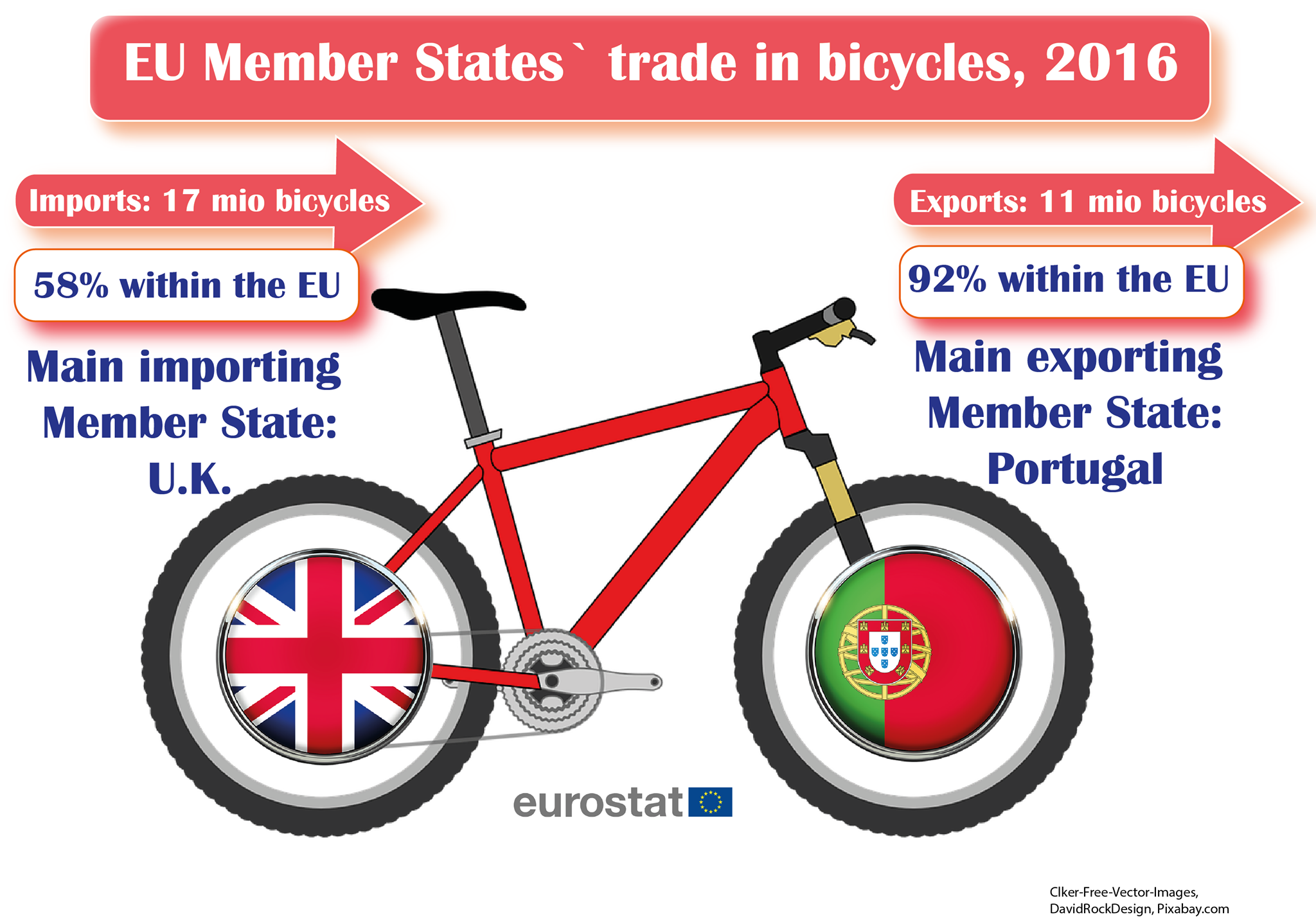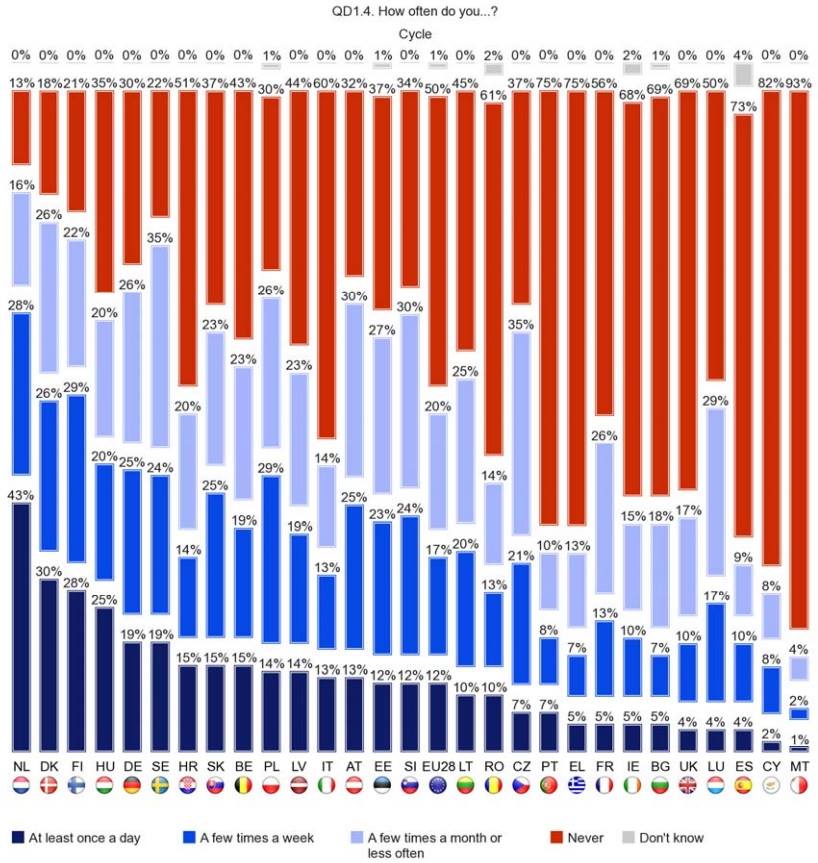Statistics on two wheels: top bicycle importers and exporters in the EU
Portugal is the leading exporter of bicycles in the European Union (EU), while Great Britain is the top importer. On the other hand, half of the Europeans say they never ride a bicycle, according to a recent report by the European Statistics Office, Eurostat.
15% of the total number of bicycles that were exported last year from the EU came from Portugal. The largest bicycle exporters in the EU further include Italy (14%) and The Netherlands (13%).
Great Britain was the leading bicycle importer in the EU, with 18% of the imported bicycles ending up here. At the same time, 92% of bicycles exported by the EU member countries ended up in other EU countries. The rest of 8% made it to countries outside the EU, especially Switzerland (15%), USA (11%) and Russia (7%).

According to Eurostat, over 40% of the total number of bicycles imported by the member states come from outside the European Union, most of them from Taiwan (24%), Cambodia 918%), Bangladesh (11%) and the Philippines (10%).
A report published last year by Confederation of the European Bicycle Industry (CONEBI) showed that around 21 million bicycles and electrically assisted bicycles are sold every year throughout Europe. More than half of them, 13 million, are produced in the EU.
Particularly, when it comes to electrically assisted bicycles, the highest sales can be found in Germany (40%), The Netherlands (20%) and Belgium (10%). At the opposite end are Romania, Greece and Cyprus.
The CONEBI data further states that the largest producers of components and accessories for bicycles in the EU are Italy, Romania, Germany, France and Portugal.

Half of the Europeans use their cars every day, while only 12% and 16% respectively would rather ride a bicycle or use public transport, according to the Eurobarometer from the European Commission.
Asked how often they ride a bicycle, 50% of European confessed that they never do it, 20% said they do it ”a few times a month or less”, 17% – ”a few times a week” and only 12% admitted to cycling ”at least once a day”.
The highest rate of those cycling ”at least once a day” is found in The Netherlands (43%), Denmark (30%) and Finland (28%), followed by Hungary and Germany.
The bottom of the ranking sees Malta, where only 1% of the respondents declared they ride a bicycle ”at least once a day”. This is followed by Cyprus (2%), Spain (4%), Luxembourg (4%) and Great Britain (4%).
Malta also stands atop of the countries with most respondents that confessed they never cycle: 93%. It is followed by Cyprus 982%), Portugal and Greece (each with 75%).

In Great Britain, 69% of respondents say that they never ride a bicycle, 17% do it ”a few times a month or more rarely”, 10% – ”a few times a week”, and 4% cycle ”at least once a day”.
Over 30% of Europeans consider that improving cycling infrastructure would be a great method for fighting heavy traffic in large cities.
Regarding the number of road accidents that included cyclists, the most recent data published by European Road Safety Observatory (ERSO) showed that they represent a little over 8% of the total number of road accidents on a European level, with the highest numbers found in Germany, Poland and Italy.
Across the ocean, in the United States, most bicyclists are found in New York (42.806), Los Angeles (24.334), Portland (23.347), Chicago (21.362) and San Francisco (21.068).
Nevertheless, when the proportion of cyclist in the total population is taken into account, the first spot is taken by Davis (23,2%), followed by Berkeley, Boulder, Somerville and Cambridge, according to the “Were We Ride” report, made by the League of American Cyclists.
According to a ranking compiled by TripAdvisor, the ”friendliest” city with cyclists is Copenhagen, followed by Amsterdam, Eindhoven, Seville, Ljubljana, Buenos Aires, Minneapolis and Montreal.